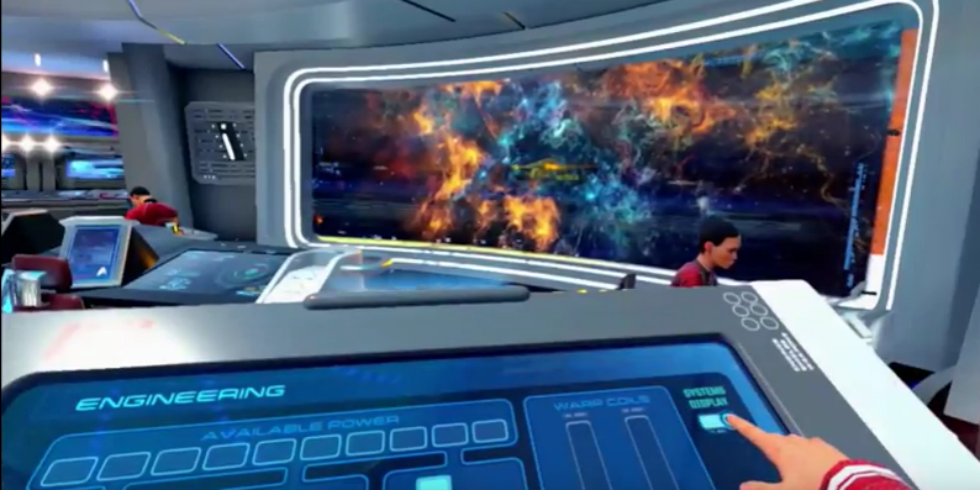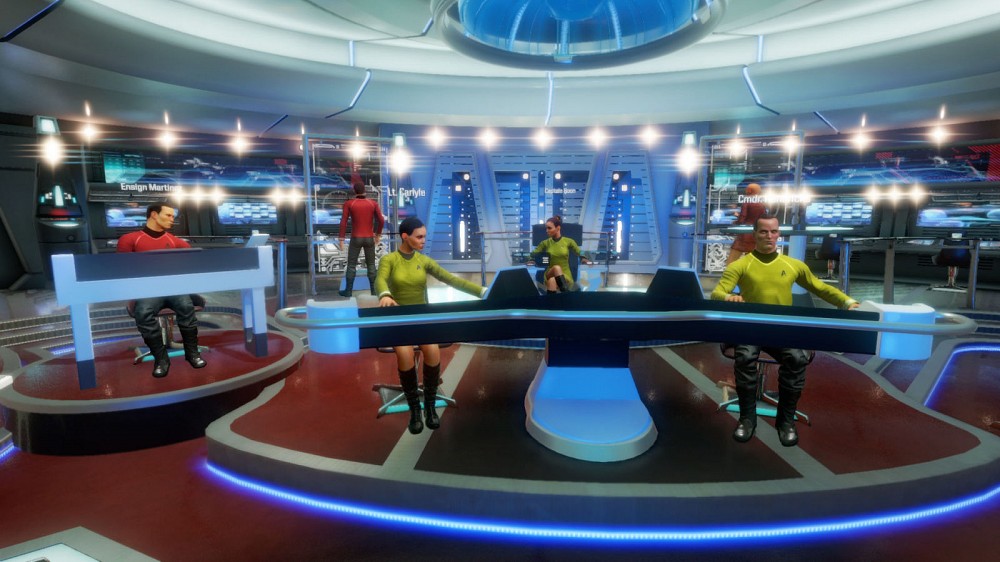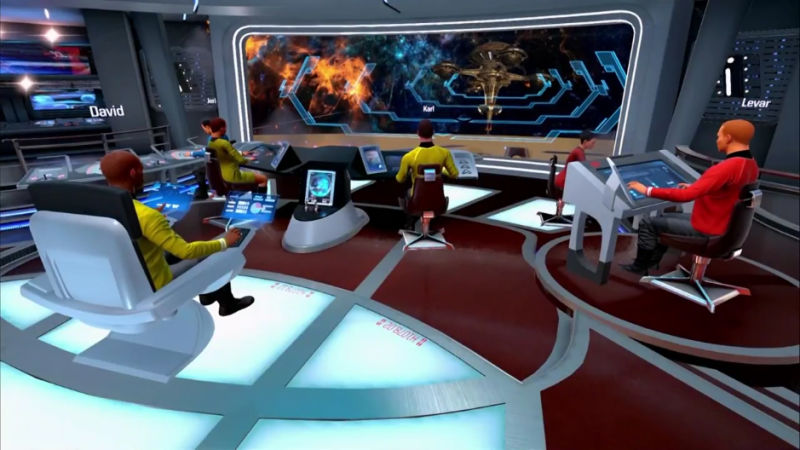If you were to design the dream VR game for many people on the planet, it would involve Star Trek. The concept of the holodeck and many other elements from the series have been popularized to the point of being synonymous with not just sci-fi culture, but modern perceptions of VR as well.
Now, from Ubisoft and Red Storm Entertainment, we finally have an authentic Star Trek experience coming exclusively to virtual reality platforms in the form of Star Trek: Bridge Crew. At E3 2016, I went behind closed doors with Ubisoft to take a look at the game using the Oculus Touch motion controllers and successfully piloted our ship through the dangers of the galaxy.
To Boldly Go Where No Game Has Gone Before
Once I arrived at the Ubisoft booth on the E3 show floor, I was taken into a back room and met with the rest of my bridge crew. Two developers from Ubisoft would joined me as the Captain and Engineer, and a fourth member manned the controls as our Tactical officer. The core appeal of Star Trek: Bridge Crew may initially seem to rest on the IP and the strong branding potential, but the real magic of the experience is in the game’s core design itself.
Since we were all four sitting in a small booth, it was a bit cramped and we could hear each other’s voice from both the room itself and repeated in the game world. When you play online as the game was designed, that won’t be a problem.
Everything started with a short, crash-course demo that walked me through the basic controls on the helm of the ship, or the pilot role. I learned to plot destinations, engage warp drive, maneuver the ship in real time, and everything else I’d need to know for us to achieve our objectives.
All of the other roles saw similar videos and once we appeared inside the game, the sense of presence was absolutely remarkable. All four of us had fully modeled bodies, complete with animated arms, hands, and heads, and could physically turn to look at everybody as the game progressed.
Our captain pointed at me (literally pointed, using the Touch controller and a button press) to ask if I was good to go before we got our first mission. I accidentally nudged the man behind me a few times, our Tactical officer, in the real world because of the cramped space in our physical environment. It was time to get our first mission.
Beam Me Up!
We soon learned that rescue pods were scattered in space near a star that was about to explode. Naturally, it was our objective to quickly save them before it was too late.
The Captain told the Engineer to charge the warp drive while I re-positioned the ship and prepared to engage. Our Tactical officer was standing by, ready to fire on any enemy ships. I reached out with my right hand to use the navigation module, pressing the console with my index finger and adjusting our speed to turn towards our destination. Once the drives were charged, I reached down with my left hand and pushed the warp drive lever forward and the ship blasted forward.
When we arrived, we were presented with a sea of destruction. Debris was scattered everywhere, but despite the danger, I was completely in awe of the visuals. The console in front of me was slick and futuristic, especially the giant star map and warp drive lever. Out across the bridge, looking out the window into space, the bright red, orange, and yellow colors of the sun and its damage were breathtaking.
Prepare the Torpedoes
“David, get us closer to that nearest Escape Pod,” said our Captain. “Let’s scan it for survivors.”
I pushed forward our thrusters and adjusted the trajectory to get closer to our target. Once we finished scanning the capsule, we started beaming them up into the ship. Once the first one was saved, only two were left…but we ran into a small problem.
A Klingon ship appeared and started opening fire on our ship. I had to immediately start deploying evasive maneuvers, while keeping it in our sights to open up fire. This resulted in a balancing act with our Captain giving orders and the three of us trying to juggle the need of survival, fighting back, and rescuing survivors.
The Engineer had to route power between engines and shields while our tactical officer was blasting away at the enemy ships. I turned my head to look at the rest of the crew and everyone was furiously tapping and adjusting items on their consoles. My palms were sweaty as I slowly watched our ship’s shields and damage indicators tick down while we waited for the final capsule to get beamed on board.
As soon as the capsule finished beaming aboard, I shifted our trajectory towards our escape route while the Engineer charged our warp drive. It’s full. “Warp drive engaged!” I pushed the throttle forward and we blasted off, barely escaping.
I turned my head to look at the crew again and everyone was raising their arms in the air cheering. We saved all of the capsules and escaped just before the Klingons destroyed us.
What makes Star Trek: Bridge Crew so special isn’t the gameplay, it’s the social interaction between the crew. I walked away thoroughly impressed and honestly feel like this is one of the best VR experiences at all of E3 this year. I felt like I was actually part of a real Star Trek crew, aboard a starship, piloting it through the stars. An experience like this would not work outside of VR.
Star Trek: Bridge Crew is in development for the Oculus Rift using the Oculus Touch, HTC Vive, and PlayStation VR. It’s currently slated for release this fall.





























